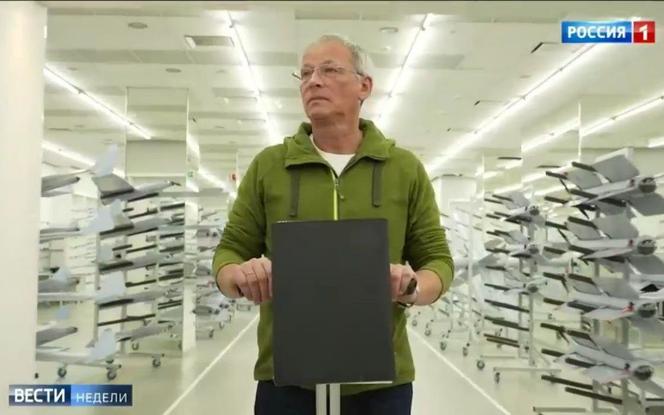


This midsummer story should surprise anyone hoping for any coherence in the world order. All wars have their aberrations, but "the level of cynicism in this one is beyond comprehension," tweeted Kyiv Independent journalist Iryna Matviyishyn. The whole story can be summed up in two sentences. The father, engineer Alexander Zakharov, sometimes nicknamed "the new Kalashnikov," develops and manufactures in Moscow kamikaze drones called Lancet that have been particularly deadly in Ukraine. His son, Lavrentii Zakharov, has been working since May in a United Nations (UN) office in Geneva to "prevent and limit the impact of the uncontrolled proliferation and use of conventional weapons and munitions."
Published at the end of July by the independent Russian site iStories, the information was confirmed on August 6 to Tribune de Genève by the United Nations Institute for Disarmament Research (UNIDIR), whose mission aims to establish "a stable and safer world in which States and populations are protected from threats of arms-related violence." Lavrentii Zakharov is on a six-month internship, renewable once. According to UNIDIR, "like all interns, he was selected through a competitive and transparent recruitment process on the basis of his qualifications, skills and experience for the position."
Since 2021, the intern has already worked for UN agencies in New York and Rome. According to the institute’s website, his research interests focus on "strengthening weapons and munitions management, as well as mine clearance and humanitarian access." UNIDIR did not confirm whether his extremely sensitive affiliation was mentioned or given special attention in the hiring process.
The Lancet drone has played a key role in Russia's war machine in Ukraine, and Moscow recently announced plans to triple its production. The Lancet is a "prowler ammunition" designed by Zala Aero, a company that employs several other family members in addition to its CEO Alexander Zakharov, although not the Geneva trainee.
The latest version of the killer drone weighs just 12 kilos and has a range of over 40 kilometers, well behind the front line. It is increasingly used by Russian forces, complicating the Ukrainian counter-offensive.
The drones are launched from a small catapult and can stay airborne for up to 40 minutes until they find a target. They crash anyway if they fail because their short autonomy does not allow them to return to their launch point. Introduced in 2019, the Lancet drones were first seen in combat in Syria. The drone looks less like a conventional drone than a missile, with two double pairs of cross-shaped wings. It is piloted remotely by an operator on a real-time screen, in search of a target. When the target is identified, the drone swoops vertically down on its target at 300 km/h.
You have 27.89% of this article left to read. The rest is for subscribers only.
